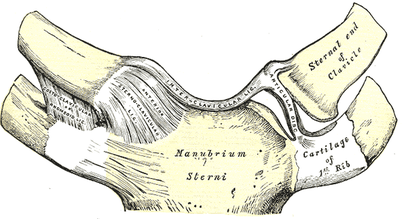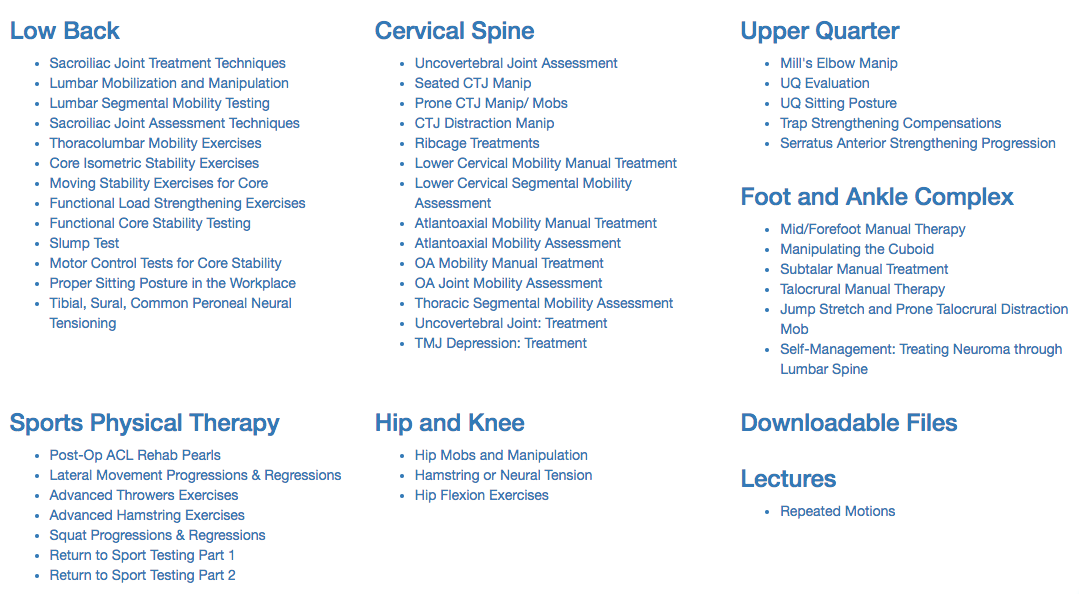- Home
- About Us
- TSPT Academy
- Online Courses
-
Resources
- Newsletter
- Business Minded Sports Physio Podcast
- Day in the Life of a Sports PT
- Residency Corner
-
Special Tests
>
-
Cervical Spine
>
- Alar Ligament Test
- Bakody's Sign
- Cervical Distraction Test
- Cervical Rotation Lateral Flexion Test
- Craniocervical Flexion Test (CCFT)
- Deep Neck Flexor Endurance Test
- Posterior-Anterior Segmental Mobility
- Segmental Mobility
- Sharp-Purser Test
- Spurling's Maneuver
- Transverse Ligament Test
- ULNT - Median
- ULNT - Radial
- ULNT - Ulnar
- Vertebral Artery Test
- Thoracic Spine >
-
Lumbar Spine/Sacroiliac Joint
>
- Active Sit-Up Test
- Alternate Gillet Test
- Crossed Straight Leg Raise Test
- Extensor Endurance Test
- FABER Test
- Fortin's Sign
- Gaenslen Test
- Gillet Test
- Gower's Sign
- Lumbar Quadrant Test
- POSH Test
- Posteroanterior Mobility
- Prone Knee Bend Test
- Prone Instability Test
- Resisted Abduction Test
- Sacral Clearing Test
- Seated Forward Flexion Test
- SIJ Compression/Distraction Test
- Slump Test
- Sphinx Test
- Spine Rotators & Multifidus Test
- Squish Test
- Standing Forward Flexion Test
- Straight Leg Raise Test
- Supine to Long Sit Test
-
Shoulder
>
- Active Compression Test
- Anterior Apprehension
- Biceps Load Test II
- Drop Arm Sign
- External Rotation Lag Sign
- Hawkins-Kennedy Impingement Sign
- Horizontal Adduction Test
- Internal Rotation Lag Sign
- Jobe Test
- Ludington's Test
- Neer Test
- Painful Arc Sign
- Pronated Load Test
- Resisted Supination External Rotation Test
- Speed's Test
- Posterior Apprehension
- Sulcus Sign
- Thoracic Outlet Tests >
- Yergason's Test
- Elbow >
- Wrist/Hand >
- Hip >
- Knee >
- Foot/Ankle >
-
Cervical Spine
>
- I want Financial Freedom
- I want Professional Growth
- I want Clinical Mastery
|
This past week I had a patient that presented with left upper quarter pain following a traction injury to her left arm as her dog yanked her arm forward. The pain was located over her left clavicular region and anterior to left scapula. My examination revealed hypomobility over her left ribs 2-3 and left sternoclavicular (SC) joint as her primary restrictions (both of which reproduced her pain when assessed). She has made excellent progress just in the treatment from the first day with joint mobilizations of the SC joint and and ribs. With reflecting upon this patient, I thought it would be great to review some of the anatomy and arthrokinematics for the SC joint. Anatomy of Sternoclavicular Joint The SC joint is made up of the medial end of the clavicle, the manubrium and an articular disc in-between. It is important to understand that the sternoclavicular joint is a saddle joint. It gets its name from the shape as it has a concave surface in one direction and convex in another, like a saddle. The medial aspect of the clavicle is concave anterior-to-posterior and convex superior-to-inferior. The manubrium has the reciprocal joint surface. The result is that with protraction/retraction, the sternum rolls and glides anteriorly and posteriorly, respectively speaking, and with elevation and depression, the clavicle rolls and slides opposite (roll superiorly and slide inferiorly with elevation; opposite for depression). Additionally, there is some posterior rotation of the clavicle that occurs with elevation and anterior rotation with extension. When it comes to assessing and treating joint restrictions in the SC joint, I try to keep it simple. Assess the mobility in each direction and mobilize into the restriction. It's possible you'll note some hypermobility in a certain direction (you don't want to increase mobility there). Often, you will note that the restricted aspect of the joint may correlate with physiological motion deficits in the shoulder; however, that is not a rule of presentation. To make matters simpler, stick with finding the restricted direction and mobilizing it. For more information on the anatomy and biomechanics of the SC joint, check out the videos below! -Dr. Chris Fox, PT, DPT, OCS
6 Comments
Lasse Liikanen
8/14/2018 03:57:48 am
"The result is that with protraction/retraction, the sternum rolls and glides anteriorly and posteriorly.."
Reply
mike levrini
3/3/2020 10:40:58 am
Where can I find authoritative information on the biomechanics/arthrokinematics of the sternoclavicular joint and shoulder as a whole? I had a hyperabduction and shoulder retraction injury of my shoulder and now having trouble throwing a softball. I intermittently throw the ball into the ground. MRI shows a slightly displaced disc along with degenerative changes. I am 69 years old.
Reply
miles Tompkins
10/31/2022 06:01:17 am
I'm interested in the position of the displacement. I suspect a forward flexed clavicle....that can be reduced quite easily..with a period of rest following..... if its forward flexed...it will not rotate weel when in elevation... 8/5/2022 05:14:19 am
The first thing that you need to do when it comes to buying dog food is to know what your dog is eating. There are many different kinds of dog food available in the market today, and each one has its own unique features. You also have to consider your budget when buying dog food because this will help you choose what kind of diet you want for your pet
Reply
Dr Michael G Levrini
10/31/2022 01:18:43 pm
Yes, I believe it is anteriorly displaced from the hyperabduction/retraction of my right shoulder. I sometimes clicks when I move the shoulder such as when throwing a ball. As I said previously, I intermittently throw a ball terribly whereby the ball goes into the ground. Embarrassing when I played on a softball team. Forced me to throw underhand when I could or from the side. I get no pain.
Reply
7/9/2023 11:56:21 am
Being recognized as one of the trailblazing Nationally Board Certified teachers in the US is a true honor, underscoring my steadfast dedication to providing outstanding education. It reinforces my passion for fostering optimal learning experiences for my students, and I am proud to actively contribute to shaping teaching benchmarks nationwide. Rick
Reply
Leave a Reply. |
Dr. Brian Schwabe's NEW Book in partner with PaleoHacks!
Learn residency-level content on our
Insider Access pages We value quality PT education & CEU's. Click the MedBridge logo below for TSPT savings!Archives
July 2019
Categories
All
|








 RSS Feed
RSS Feed